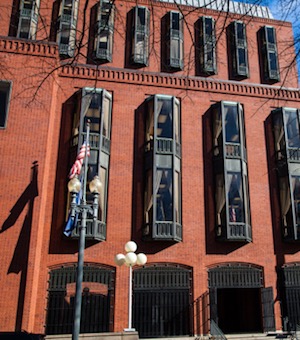 In re CSB-System Int’l, Inc. (Fed. Cir. Aug. 9, 2016) (Before Newman, Moore, and Stoll, J.) (Opinion for the court, Stoll, J.) Click Here for a copy of the opinion.
In re CSB-System Int’l, Inc. (Fed. Cir. Aug. 9, 2016) (Before Newman, Moore, and Stoll, J.) (Opinion for the court, Stoll, J.) Click Here for a copy of the opinion.
A third party filed a request for ex parte reexamination of a patent owned by CSB-System International, Inc. (“CSB”). The challenged patent claims an electronic management system for telephones connected to an integrated services digital network (“ISDN”). The examiner rejected all challenged claims as anticipated or obvious over various prior art references. In response, CSB argued that the claim term “personal computer” should be limited to personal computers that do not emulate terminals, and that the claimed “LAN Server” must provide shared services to other components on the LAN, and must respond to messages from clients. Under these constructions, the art asserted by the examiner would not anticipate or make obvious CSB’s claimed invention. The examiner refused to adopt these constructions, and issued a right of appeal notice that maintained the rejections. The examiner rejected CSB’s proposed constructions, because the terms carried their plain and ordinary meaning under the Broadest Reasonable Interpretation (“BRI”) standard. After the examiner issued the right of appeal notice, the patent expired. CSB appealed to the Patent Trial and Appeal Board (“Board”).
On appeal, CSB renewed its arguments that the terms “personal computer” and “LAN server” should be construed to contain additional limitations. Further, CSB argued that the Board should apply the narrower Phillips claim construction standard applicable to issued patents, rather than the BRI standard, because the patent expired. Under Federal Circuit law, the BRI standard is only applicable where the patent owner can still amend the claims. Once the patent expired, CSB lost the ability to amend the claims. The Board refused to apply the Phillips standard, and affirmed the Examiner in all respects. CSB appealed to the Federal Circuit.
The Court held that the Board improperly continued to apply the BRI standard following the expiration. While the examiner properly applied the BRI prior to expiration, the BRI standard no longer applies the moment the patent expires – even if it means the Board applies a different standard than the examiner. The USPTO argued that the BRI standard should continue to apply because the Board reviews the decision of the examiner, and should thus apply the same standard the examiner applies. Otherwise, the Board could decide certain issues without examiner guidance. However, since only patent owners appeal adverse judgments, and because the construction of a term under the Phillips standard will always be either the same or narrower than the construction under the BRI, there is no risk that a changed standard could result in the Board issuing new grounds of rejection due to a change in claim construction. The USPTO also argued that the BRI standard should apply because CSB could have amended the claims before the examiner. However, even if CSB had amended the claims, the patent would not issue with amended claims if the patent expires on appeal. Further, because pendency before the Board can vary, the applicability of the BRI standard should not depend on whether the patent owner could have amended the claims, or whether they could amend in the future.
[Troutman-Ad]
Nevertheless, the Court found that neither construction proposed by CSB was correct even under the narrower Phillips standard. The proper construction of a term often will be the same under either standard. Here, CSB cannot point to anything within the specification or intrinsic record that would suggest that either “LAN Server” or “personal computer” should be more limited than their plain and ordinary meaning. Because the constructions the Board applied under the BRI standard were no different than the constructions under Phillips, the Court affirmed the Board’s finding that the claims of the patent were invalid over the asserted art.
Practitioners should be aware that the claim construction standard shifts from the BRI to the Phillips standard the moment the patent expires in ex parte reexaminations. Unlike inter partes reviews, ex parte reexamination does not have a statutory time limit, and can last a number of years. Should the patent expire during that time, practitioners may argue different, narrower claim constructions under the Phillips standard. This is true even if such arguments are presented for the first time on appeal. However, even though constructions under the Phillips standard may be narrower, they need not be. Instead, many terms carry the same construction under either standard.
Lindsay Henner, Parker Hancock, and Puja Dave also contributed to this summary.
[Troutman-About]

![[IPWatchdog Logo]](https://ipwatchdog.com/wp-content/themes/IPWatchdog%20-%202023/assets/images/temp/logo-small@2x.png)


![[Advertisement]](https://ipwatchdog.com/wp-content/uploads/2024/04/Patent-Litigation-Masters-2024-sidebar-early-bird-ends-Apr-21-last-chance-700x500-1.jpg)

![[Advertisement]](https://ipwatchdog.com/wp-content/uploads/2021/12/WEBINAR-336-x-280-px.png)
![[Advertisement]](https://ipwatchdog.com/wp-content/uploads/2021/12/2021-Patent-Practice-on-Demand-recorded-Feb-2021-336-x-280.jpg)
![[Advertisement]](https://ipwatchdog.com/wp-content/uploads/2021/12/Ad-4-The-Invent-Patent-System™.png)







Join the Discussion
No comments yet.